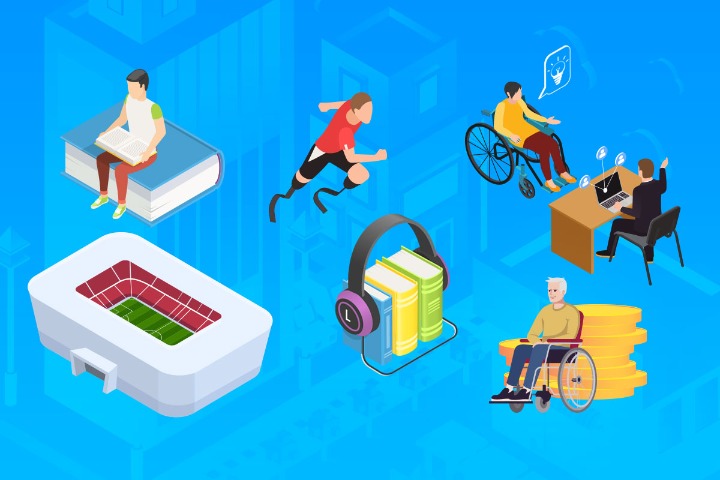Tech-ing a step forward

Cutting-edge assistive devices capture the imagination at the Asian Para Games Village

From intelligent bionic hands to artificial retinas, and from sign language translation software to exoskeleton rehabilitation robots, there are dozens of various high-tech assistive devices that are captivating visitors to the Wheelchairs and Other Assistive Devices Maintenance Centre at the Asian Para Games Village in Hangzhou.
When the para athletes visit the center, they not only have the opportunity to get their assistive apparatus professionally maintained and repaired, but can also gain firsthand knowledge about a wide range of cutting-edge, high-tech assistive devices.
When entering the center, visitors are greeted by two cool things: electric wheelchairs and smart electric scooters.
The electric wheelchairs are lightweight and comfy, thanks to their special super-strong carbon fiber material, and they have a breathable backrest, making them easy to use.

The smart electric scooters can move in different ways — forwards, sideways, diagonally, and even spin around — they can handle all sorts of bumpy or tricky terrain. They come with smart features, like a system that enables users to "stand", an app that allows the scooter to be controlled via Bluetooth, anti-tip wheels at the back and removable batteries.
Artificial cochlear implants, 3D-printed spinal braces, hydraulic, carbon fiber ankle-mounted footplates, pneumatic finger training devices … the list of high-tech equipment reads like the props list for a sci-fi film.
A standing and walking robot helps people with leg problems by making exercise fun and visual through interactive games.
Sun Gang, deputy director of the Classification Centre at the Asian Para Games Village, explained that people who can't move their legs for a long time may have problems with blood circulation and other body functions.

"With the assistance of the standing and walking robot, these individuals can independently partake in daily exercises, contributing significantly to their overall physical health," Sun said.
According to Sun, traditionally, they used surgery and medicine for treatment, but now, rehab exercises have become an important part of recovery.
"The rehab robot makes it more personalized and effective, helping people with disabilities get some of their strength and movement back," he said.
A set of smart bionic legs on display use special technology and sensors to learn how well a person's good leg moves. Then, they can copy those movements in real-time using a hydraulic system.

Zhu Huashan, head of the maintenance center, explained: "These legs can learn from your healthy leg's movements. So, if you want to ski, and your healthy leg is skiing, the smart bionic leg can follow along. It can also adapt to running, walking, and more. It's very useful."




